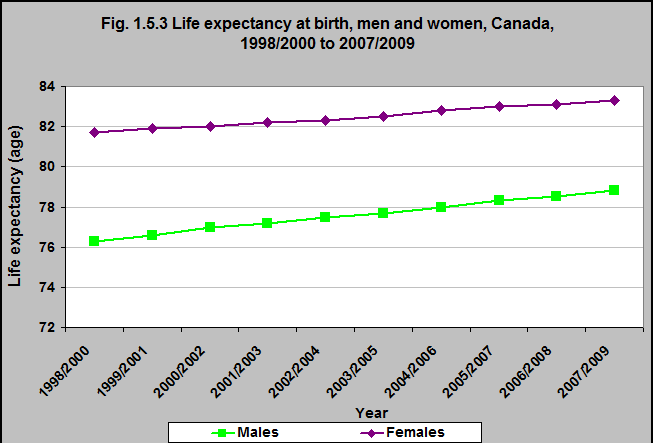Life expectancy at birth, men and women, Canada, 1998/2000 to 2007/2009

Notes:
Life expectancy is the number of years a person would be expected to live, starting at birth (for life expectancy at birth) or at age 65 (for life expectancy at age 65) if the age- and sex-specific mortality rates for a given observation period (such as a calendar year) were held constant over his/her life span.
Life expectancy is calculated with the Greville’s method for abridged life tables, using annual mortality rates with five-year age groupings of population and mortality rates. See “Life Tables, Canada, provinces and territories, 2000/2002” (catalogue number 84-537-XIE) for a complete explanation of the methodology used to produce abridged life tables.
Source: CICH graphic created using data adapted from Statistics Canada, Canadian Vital Statistics, Birth and Death Databases and population estimates. CANSIM table 102-0512. http://www5.statcan.gc.ca/cansim/a26?lang=eng&retrLang=eng&id=1020512&&pattern=&stByVal=1&p1=1&p2=37&tabMode=dataTable&csid= (accessed March 19, 2017) is an update of CANSIM table 102-0511.
In 1998/2000, the life expectancy at birth was 81.7 for women and 76.3 for men. In 2007/09, this rose to 83.3 (2%) for women and 78.8 (2%) for men.
This is up from a combined (men and women) life expectancy of 71 years in 1961. Wealthier people in Canada have a longer life expectancy than do poor people and the Indigenous population has a lower life expectancy than non-Indigenous people.1
1Conference Board of Canada. Life Expectancy. http://www.conferenceboard.ca/hcp/details/health/life-expectancy.aspx
